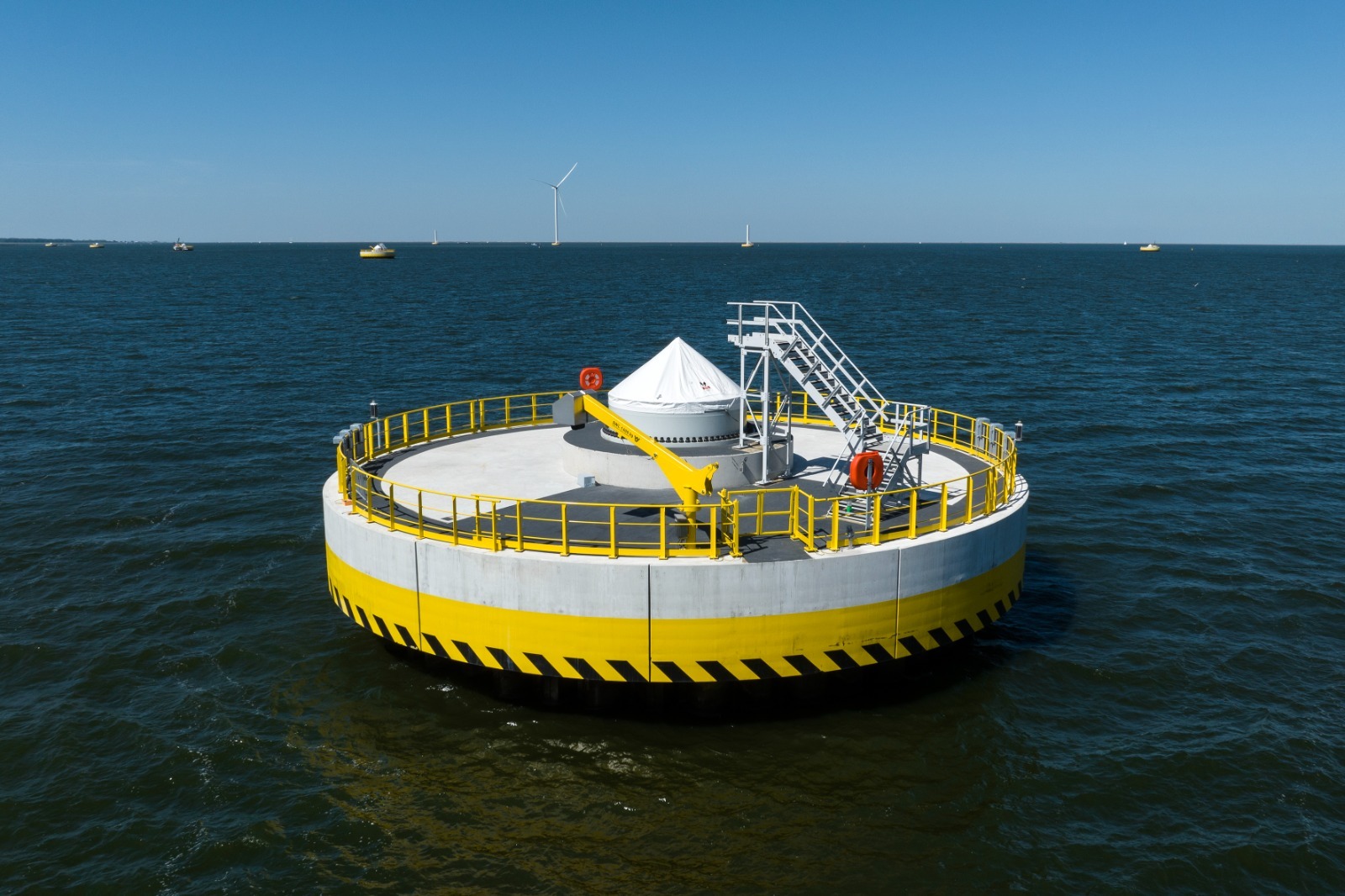Offshore and Nearshore Wind Power – Meeting the Energy Needs of the Future
In this edition, we highlight the strategic role of offshore and nearshore wind energy and our approach to delivering these projects.
What is offshore wind power?
Offshore wind power refers to wind turbines installed out at sea, typically far from the coastline, where winds are stronger and more stable. These turbines generate electricity which is transmitted to onshore grids via subsea cables.Nearshore wind power is similar, but turbines are placed much closer to the coast, usually in shallow waters or even within sight of land. Nearshore sites often require different construction techniques due to limited water depth and vessel access, but they offer similar clean energy benefits.
Both offshore and nearshore wind energy play a key role in:
- Reducing reliance on fossil fuels
- Meeting growing energy demand near coastal urban centres
- Enabling countries to reach climate neutrality goals
Why are offshore and nearshore wind farms important?
Offshore and nearshore wind power offers unique advantages compared to land-based wind energy.Offshore and nearshore wind farms benefit from:
- Stronger and more stable winds than onshore locations
- Larger, uninterrupted spaces for turbine installation
- Minimal noise and visual impact on residential communities
- Proximity to coastal demand centres — where energy is needed most
- Unmatched innovation potential in floating turbines and marine construction
Together with Ballast Nedam, our Netherlands-based group company, we’ve been part of this transformation from the very beginning.
Offshore: One of Our Core Areas of Expertise
Ballast Nedam has a rich history in designing and building both offshore and nearshore wind farms. With over 30 years of experience, the company has installed more than 500 foundations and key infrastructure for wind turbines that continue to generate large amounts of sustainable energy today.
Specialisation in Challenging Projects
As an experienced EPCI (Engineering, Procurement, Construction and Installation) contractor, Ballast Nedam is responsible for the full project scope, from design and procurement to construction and offshore installation. The company specialises in delivering all supporting infrastructure for offshore wind farms, including foundations and cabling.Ballast Nedam excels in specialty projects requiring one-off solutions, such as:
- Difficult soil conditions
- Nearshore sites with shallow waters and limited access
Collaboration is key
Offshore and nearshore projects are complex by nature, with many environmental and technical variables.Ballast Nedam's strength lies in combining the expertise of all involved stakeholders, believing that the success of each project depends on strong partnerships and collaborative problem-solving.
Proven Track Record
Ballast Nedam teams work closely with partners to develop solutions that address every unique challenge. By carefully analysing variables, from soil and wave conditions to turbine loads and customer requirements, Ballast identifies the best-fit installation or decommissioning strategy.Completed projects include:
Case Study: Windplanblauw
Ballast Nedam specialises in delivering offshore and nearshore wind projects that require tailor-made engineering. One such example is Windplanblauw, a nearshore wind farm located in the IJsselmeer, where 28 outdated turbines were replaced by 24 modern, high-capacity units installed on water.The site lies within a Natura 2000 ecological protection zone, introducing additional environmental and technical constraints that demanded innovative solutions.
Technical & Environmental Challenges
The unique characteristics of the IJsselmeer site brought together a range of logistical, geotechnical, and environmental complexities. From shallow waters and soft soils to the strict requirements of a protected ecological zone, the project demanded adaptive engineering and precision planning.- Shallow waters and narrow locks limited vessel access, requiring modular construction with pontoons and small workboats
- Soft soil conditions required a hybrid foundation approach combining land-based and marine structures
- Strict ecological regulations due to the site’s location within a Natura 2000 protected area
Innovative Foundation Concept
To make turbine installation possible in the shallow waters of IJsselmeer—where conventional offshore methods were not viable—Ballast Nedam developed a globally unique hybrid system. By combining onshore turbine foundations with marine-grade cofferdams, the team created a stable and environmentally sensitive base. This approach not only showcases engineering ingenuity but also represents a pioneering model in balancing technical innovation with ecological care.- Globally unique cofferdam design enabling onshore turbines to be installed on water
- Hybrid foundation merging onshore and offshore techniques
- Modular construction adapted to shallow waters and restricted vessel access

Ecological Measures in a Protected Zone
Given the project's location within a Natura 2000 ecological protection area, strict environmental safeguards were integrated into both the construction and operational phases to preserve local biodiversity and minimise ecological disruption.- 200 reef balls made of pH-neutral, eco-friendly concrete were placed on the lakebed to support aquatic life
- Bird protection grids were installed on open pile ends to prevent entrapment
- Raised-edge barriers on pontoons prevented accidental spills into the lake
- Use of biodegradable hydraulic oils and a targeted lighting plan minimised both chemical and light pollution
Outcome
Despite a unique set of challenges, Windplanblauw is now fully operational. The project showcases Ballast Nedam’s ability to deliver complex engineering solutions while maintaining a strong commitment to environmental responsibility, and contributing meaningfully to Europe’s clean energy transition.From the open sea to the surf zone, Ballast Nedam continues to push the boundaries of offshore and nearshore engineering, delivering not only world-class infrastructure, but also long-term value for people and the planet.





